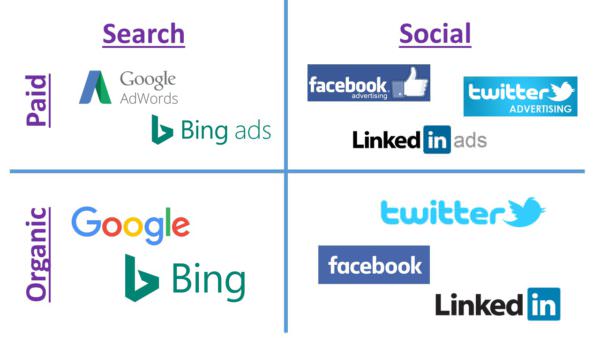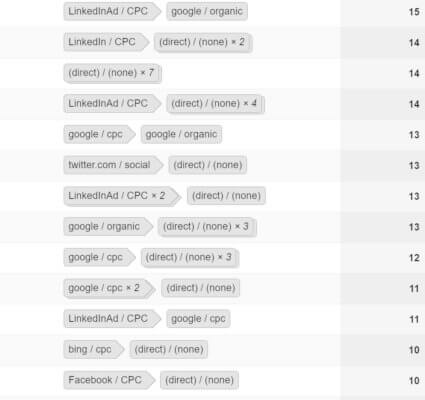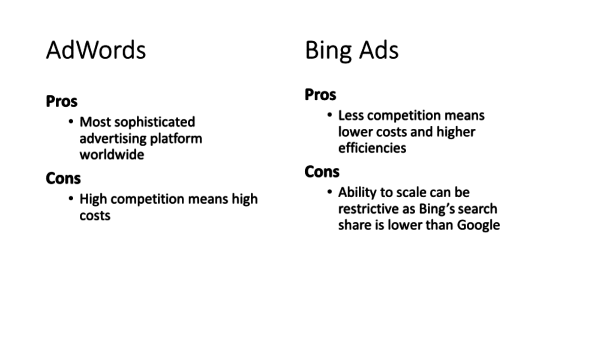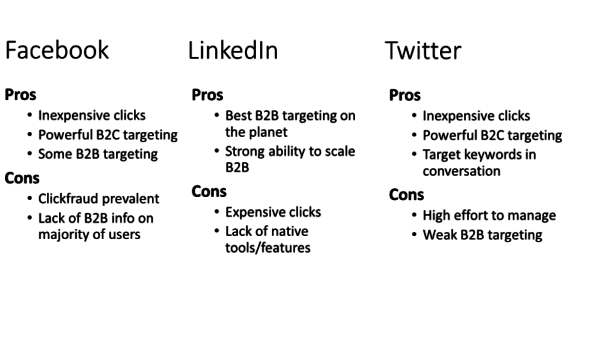 Having “grown up” in search marketing, I had a strong appreciation for keyword targeting early on. Then, about five years ago, my corporate responsibilities led me to take on social campaigns, and I fell in love instantly.
Having “grown up” in search marketing, I had a strong appreciation for keyword targeting early on. Then, about five years ago, my corporate responsibilities led me to take on social campaigns, and I fell in love instantly.
Quite often, I’m asked about which is better for companies, and, with very few exceptions, I’ve found myself giving the same advice: “You absolutely should be doing both!”
I hope as a result of this article, marketers will put in the effort to practice both disciplines, as well as understand the value that they both bring to the table.
Consider this chart showing where the various main channels fall in terms of cost and focus:

Why you can’t really compare
Search and social channels are completely different animals. They sit in different areas of the buyer’s journey; they carry very different levels of competition and vary significantly in cost.
Sales journey
Search
Search is intent-based, so quite often, marketers will target keywords closer to the bottom of the sales funnel, such as “buy skydiving lessons.” This is fantastic because you’re giving the prospective customer exactly what they asked for. This leads to high conversion rates, high conversion value and fast sales cycles.
When I send a glut of AdWords leads to a sales team, I always hear the same two pieces of feedback:
- Thanks! These leads are hot.
- BUT do you have any way to qualify these folks at all? We’re talking to janitors, CEOs and everyone in between. Can you send us just more of the CEOs?
Search is quite weak at accomplishing this because anyone can type a keyword. But this is where social shines!
Social
Social is, by its very nature, interruptive and therefore does not currently give marketers the ability to target by intent. Instead, we target by personal, professional, demographic and psychographic segments which allow us to reach the people who are most relevant and able to purchase from us.
Social marketing, because it’s not being requested, traditionally performs best at the middle to the top of the funnel, and functions best for introducing your brand and starting a conversation, rather than going right for the sale.
I’ve found the most successful lead magnets for social to be white papers, guides, e-books and webinars. The low cost and amazing targeting abilities are real advantages — not to mention that social reaches much wider audiences than just those completing searches.
Social gets your message in front of new — and large — audiences. It fuels search campaigns powerfully. To see this interplay, check out the Top Conversion Paths report inside of Google Analytics, and look at how many AdWords/Bing Ads leads were initiated by your social channels.

Dennis Yu, CTO of Blitzmetrics, shared with me privately that paid social is simply an amplifier for volume.
Think of it as a megaphone. If your landing pages or offers are poor performers, pushing them out with ad dollars to larger audiences will just amplify that poor performance. If your landing pages and offers are great, they’ll perform well when amplified.
Money left on the table
So what are you missing if your marketing mix is exclusively either search or social?
Those running only search campaigns are relinquishing access to the full breadth of lead volume associated with those who haven’t expressly searched for a pain point they face. They also face a mature landscape of adept marketers in their competition, who have driven click costs near their low-margin equilibrium (or higher in some cases).
Those relying exclusively on social miss out on the follow-on search traffic of those seeking to continue the relationship they started (and paid for) on social. This search traffic, both general and brand-focused, can be extremely efficient and much appreciated by sales teams.
One caveat
Every once in a while, I run across an industry where either search or social doesn’t make sense. For example, ObservePoint is a company which audits and diagnoses analytics tagging issues. There are no search terms their clientele searches in significant volumes to build a strong search program.
I’ve also come across companies that have such plentiful search volumes, and such low industry competition, that running search is like shooting fish in a barrel.
These situations are rare, but they do exist.
Marketer reluctance
I continue to encounter marketers who are reluctant to learn or practice skills on the other side of the fence. Often, those who consider themselves search masters consider social to be inferior in some way, and vice versa.
The prevailing justification I’ve heard is “I only have so much time. I could either continue to make optimizations on my search stuff, which I know expertly and comfortably, or I could spend time to learn a new platform and risk some potential failure.”
I’d like to point out that, although it’s comfortable to assume business as usual, continuing to optimize an existing channel often results in small efficiency gains (I’ve seen five to 10 percent, for example), but an unexplored channel can often result in extreme efficiencies of more than 50 percent.
Step up and take the initiative to explore additional channels. It’s no longer sufficient to only know one side or the other. You no longer have an excuse — marketing is search AND social.
Though there certainly is a learning curve on any new platform, each of the search/social platforms I’ve used operates on the same principles and metrics. Each has impressions, clicks, cost and conversions (accompanied by their derivative ratios — CTR, CPC, Cost/Conversion, Conversion Rate and so on).
Explanation of platforms
So you’re sold on the idea of integrating both search and social into your marketing mix now, but how do you know which platforms present the opportunity for the biggest win? Let’s break it down:
Search

Social

The marketer’s call to action
I challenge you to pick a channel that seems like a strong fit for your company/client and run a test. Get a taste of a new channel and flourish as the well-rounded marketer you are!
Share any wins you’ve found in expanding your channel competencies with us on Facebook, Twitter or our LinkedIn Group.
Some opinions expressed in this article may be those of a guest author and not necessarily Marketing Land. Staff authors are listed here.

